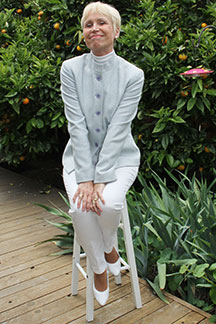The STASI was the secret police agency of the former German Democratic Republic (East Germany). The name stands for Ministerium fuer STAatsSIcherheit (Ministry for State Security). In keeping with their motto “Schild und Schwert der Partei” (Shield and Sword of the Party) the Stasi became one of the most repressive and feared institutions that ever existed.
How the Stasi got its start
The Stasi grew out of the internal security and police agency that was launched by the Soviets in their occupation zone of Germany in the aftermath of World War II. On 8 February 1950, four months after the East German state was established, the state’s new legislature established the Ministry for State Security. The agency’s initial responsibility was limited to domestic political surveillance and foreign espionage. Soon its power grew exponentially.
What made the Stasi so powerful?
Under Erich Mielke http://www.walled-in-berlin.com/j-elke-ertle/erich-mielke-master-of-fear/, director of the agency from 1957 to 1989, the Stasi gained access to every aspect of the daily lives of East German citizens: Aside from foreign espionage, it suppressed internal political opposition; it imprisoned hundreds of thousands of citizens; it infiltrated every major East German institution; it even went so far as to analyze the garbage for suspect western food and/or materials. In addition, the Stasi maintained detailed files on family and personal relationships.
It accomplished these tasks with approximately 100,000 full-time Stasi officers, 15,000 soldiers, army officers and police in addition to a vast network of full-time and part-time citizen informants and unofficial collaborators. The number of these citizen-helpers has been estimated at somewhere between 500,000 and 2,000,000. These unpaid collaborators were often recruited from people whose jobs entailed frequent contact with the public. They included doctors, nurses, clergy, lawyers, teachers, trolley conductors, waiters, janitors and actors. In return for small incentives designed to make them feel important, they were asked to spy on and denounced colleagues, friends, neighbors and family members. By 1989 when the Berlin Wall fell the Stasi employed one full-time agent for every 166 East Germans. Adding full-time and part-time informers and collaborators, the Stasi relied on one informer per 6.5 people. https://www.nytimes.com/books/first/k/koehler-stasi.html The agency maintained files on more than one-third of the East German population.
By the 1970s, the Stasi decreased its number of overt persecutions, such as arrests and torture, and increasingly focused on the use of psychological tactics, called Zersetzung (undermining). Favored methods included gaslighting, which is a form of mental manipulation with the intent to make the victims doubt their sanity. Gaslighting tactics included breaking into homes and moving furniture, changing the time on the clock, removing pictures from walls or simply replacing one variety of tea with another.
End of the Stasi
Soon after the fall of the Berlin Wall in 1989, the East German legislature tried to rebrand the Stasi as the Amt fuer Nationale Sicherheit (Office for National Security). But because of a public outcry this agency was never established. Instead, the Stasi was formally disbanded in February 1990. But before the agency was dissolved, Stasi officials destroyed a vast amount of the organization’s files. East German citizens occupied the Stasi’s main headquarters in Berlin on 15 January 1990, stopped the destruction and saved the remaining files.

Attempted destruction of files by the Stasi and bags of files recovered – photos on exhibit in “Haus in der Runden Ecke”, Leipzig.
Since 2015, East German Stasi files are open to the public online for the first time. Please visit http://www.walled-in-berlin.com/j-elke-ertle/stasi-files-online-now/
For a sneak peek at the first 20+ pages of my memoir, Walled-In: A West Berlin Girl’s Journey to Freedom, click “Download a free excerpt” on my home page and feel free to follow my blog about anything German: historic and current events, people, places and food.
Walled-In is my story of growing up in Berlin during the Cold War. Juxtaposing the events that engulfed Berlin during the Berlin Blockade, the Berlin Airlift, the Berlin Wall and Kennedy’s Berlin visit with the struggle against my equally insurmountable parental walls, Walled-In is about freedom vs. conformity, conflict vs. harmony, domination vs. submission, loyalty vs. betrayal.

















